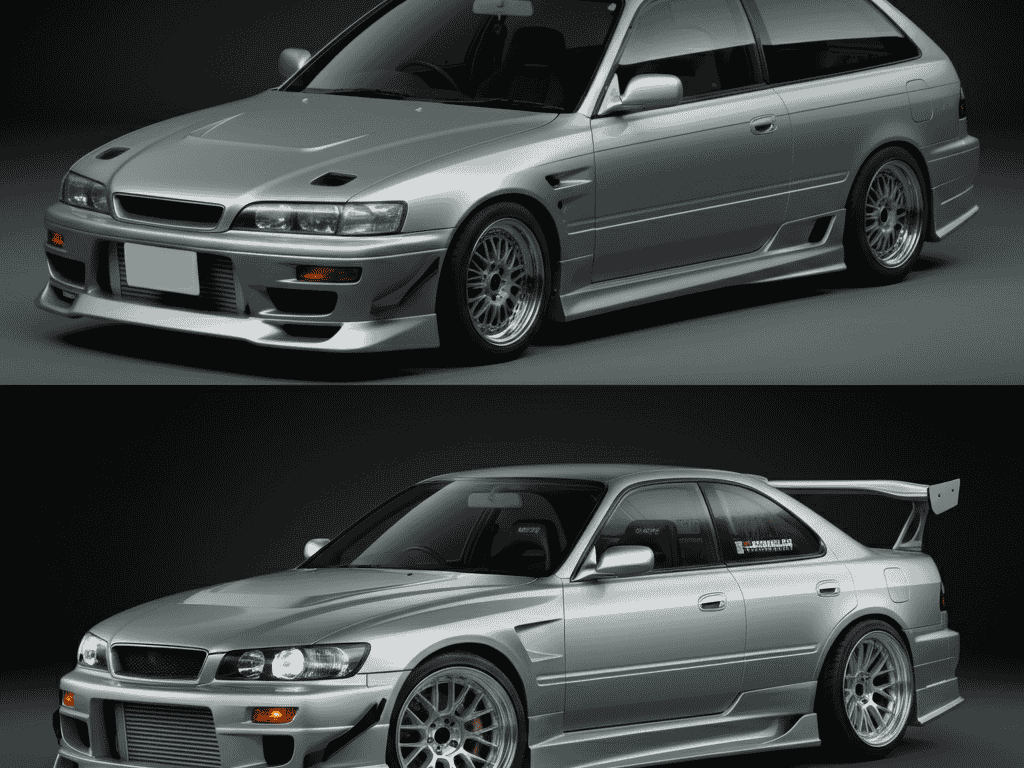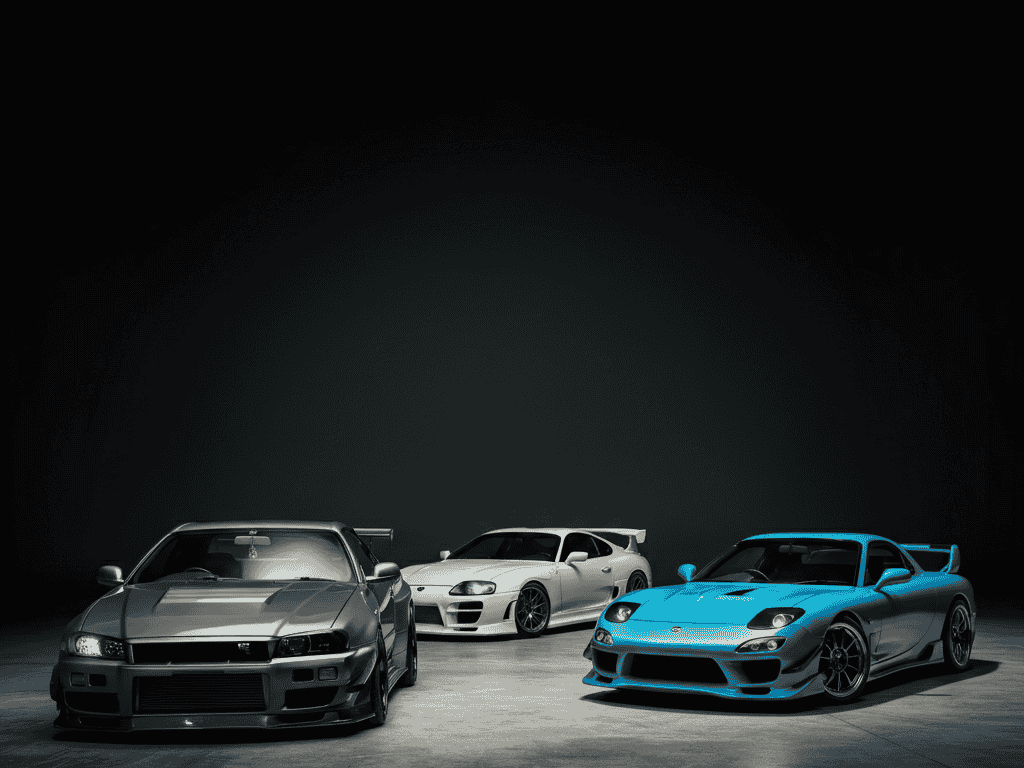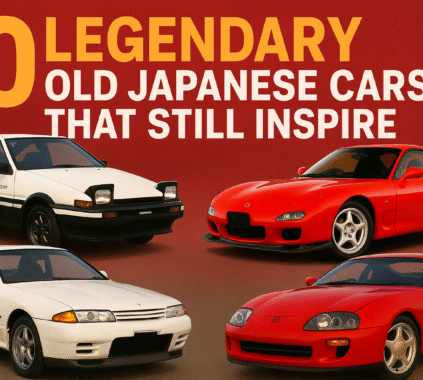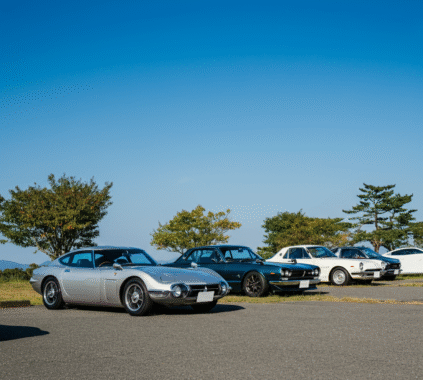
If you spend even five minutes around car people, you’ll hear the acronym JDM tossed around with a mix of reverence and excitement. But let’s unpack it properly, like a fresh set of coilovers out of the box.
JDM What Does It Stand For? It means Japanese Domestic Market—vehicles, parts, and specs intended for sale and use inside Japan.
Simple enough on the surface, yet beneath that tidy definition sits a deep culture of engineering excellence, obsessive craftsmanship, and a global fanbase that treats JDM like a passport into a uniquely Japanese way of building and enjoying cars.
In this guide, I’ll break down what JDM is (and isn’t), how it evolved, why it’s adored worldwide, and how you can step into the scene without stepping on the common landmines.
Along the way, I’ll share enthusiast-level insights you won’t find in generic explainers, and I’ll point you to a couple of authoritative resources for deeper dives.
What JDM Means (and Why It Matters)

At its core, JDM What Does It Stand For? The phrase points to anything designed for Japan’s home market: vehicle trims, options, ECU maps, emissions gear, safety kits, and parts catalogs built to meet Japanese regulations and consumer tastes. That definition matters because:
- Specs differ by market. A “JDM spec” often isn’t identical to the version exported to North America, Europe, or elsewhere. Power figures, gearing, aero, lighting, and even seat fabrics can change by market.
- Japanese regulations shape the product. Japan’s inspection regime (commonly nicknamed Shaken) and city driving realities influence everything from compact dimensions to advanced tech and impeccable build standards.
- Culture shapes engineering. Manufacturers have historically built special variants for Japan that lean into local motorsport, touge (mountain pass) culture, and brand allegiances.
When you hear someone say “that’s a JDM bumper” or “JDM cluster,” they’re referring to parts that shipped initially on Japanese-market cars—often with details or performance that export versions didn’t get.
A Brief Timeline: How JDM Became a Worldwide Obsession

1970s–1980s: Precision and Efficiency. Japanese manufacturers became synonymous with reliability, quality control, and clever packaging. Domestically, they experimented with turbocharging and lightweight chassis to navigate strict displacement and taxation rules.
1990s: The Golden Era. If there’s a decade that minted the JDM mythos, it’s this one. Skyline GT-R (R32–R34), Supra (A80), RX-7 (FD), NSX (NA1/NA2), Lancer Evolution, Impreza WRX/STI, Silvia/180SX—the list reads like a fantasy garage.
Japan’s manufacturers poured race tech into street cars.
Homologation specials were everywhere, and the country’s tuning scene exploded.
2000s: Global Reverberations. Video games (Gran Turismo), anime, and cinema (you know the one) broadcast JDM icons to every corner of the planet.
Import laws and 25-year rules slowly opened floodgates, while forums and early social platforms turned tuning knowledge into a shared global language.
2010s–Present: Maturity and Appreciation. Values of clean, original examples skyrocketed, and the scene diversified.
OEM+ restorations grew alongside wilder time-attack builds. Meanwhile, newer heroes—GT86/BRZ, R35 GT-R, Civic Type R—kept the flame alive.
Why Enthusiasts Love JDM (Beyond the Hype)
1) Engineering with personality. JDM cars combine precision with playfulness: think high-revving fours and rotaries, trick AWD systems, and chassis that feel alive on a back road.
2) Modular tuning DNA. From factory turbo engines to easily swappable differentials and transmissions, JDM platforms invite tasteful, high-impact mods. The aftermarket is deep, the community is richer.
3) Culture and story. JDM: What Does It Stand For culturally? It stands for a style of driving, a code of respect for craftsmanship, and a heritage tied to mountain passes, street circuits, and grassroots competitions.
4) Right-size fun. Many JDM legends are compact, light, and approachable—more about driver feel than just headline horsepower.
5) Detail obsession. Japan’s domestic parts often feature subtle upgrades: better textiles, sharper instrument clusters, unique aero, and mechanical tweaks that reward the attentive.
JDM vs. Japanese Cars: Not Always the Same Thing
All JDM cars are Japanese, but not all Japanese cars are JDM. A Camry built and tuned for North America is a Japanese car, but not JDM. Meanwhile, a USDM Acura Integra Type R and a JDM Honda Integra Type R are cousins with crucial differences—intake, cams, gearing, chassis stiffening, and interior trims may vary.
This distinction is why collectors hunt true domestic-market VINs and parts. The appeal isn’t just rarity—it’s authenticity to the original Japanese spec.
Popular JDM Segments (and Why They Hit So Hard)

1) Turbo AWD Street-Racers
Evo and WRX/STI built rally DNA into daily-drivable monsters. Tight gearing, responsive turbos, and torque-vectoring magic turned B-roads into playgrounds.
2) Rear-Drive Drift Darlings
Silvia/180SX/AE86/Chaser/Mark II—these cars prioritized balance and steer-by-throttle feel. Lightweight front ends and predictable rear suspension geometry made them drift staples.
3) Grand-Touring Icons
Supra and Skyline GT-R exemplify high-speed stability, tuning headroom, and durability. The GT-R’s ATTESA E-TS AWD and Super-HICAS rear steer were ahead of their time; the 2JZ-GTE remains the blueprint for immense power.
4) Lightweight Purists
Miata isn’t JDM-only, but the Japanese-market Roadster variants and special editions captured the ethos: light, communicative, and joyful. The NSX delivered scalpel-like precision with daily livability.
5) Kei Car Wizards
Born from Japanese tax and size constraints, Kei cars (Cappuccino, Beat, Autozam AZ-1) prove that fun isn’t measured in liters. High-rev smiles in tiny packages.
The Role of Regulation (and How It Shaped JDM)
Japan’s domestic rules around inspection, emissions, dimensions, and displacement nudged manufacturers toward creative engineering solutions—small, efficient engines with forced induction; meticulous fit-and-finish; and frequent special editions.
That ecosystem fostered cars that feel uniquely “Japanese” in their problem-solving: they’re compact yet cleverly packaged, and often tuned for driver engagement over brute force.
For a high-level, credible look at Japan’s auto industry context, the Japan Automobile Manufacturers Association (JAMA) provides data and background on domestic market structure and exports. Check out their resources here:
OEM+ vs. Wild Builds: Two Valid Paths
One beautiful truth about the scene: both philosophies are celebrated.
- OEM+ focuses on authenticity and subtlety—factory-correct panels, period wheels, fresh bushings, proper alignment, and tasteful period-correct upgrades. The car feels like the best version of itself in 1999.
- Wild builds chase lap times, drift angles, or raw speed—big turbos, aero experimentation, widebody kits, and standalone ECUs. When executed with care, these cars are rolling testbeds of innovation.
JDM: What Does It Stand For in the garage? It stands for respect—for the platform’s strengths, for engineering intent, and thoughtful modification.
Iconic Models to Know (and What Makes Them Special)
- Nissan Skyline GT-R (R32–R34): Ironclad RB engines, advanced AWD/rear steer, track-ready out of the box. Tunable to the moon yet eerily tractable on the street.
- Toyota Supra (A80): The 2JZ-GTE is a tuning legend: robust internals, smooth power delivery, and an appetite for boost that makes four-digit figures achievable with the right supporting mods.
- Mazda RX-7 (FD): Featherweight feel and a jewel-like rotary that rewards precise tuning and maintenance. Sublime steering, timeless shape.
- Honda NSX: Analog focus with supercar looks and reliability: mid-engine balance, aluminum construction, and that classic NA response.
- Mitsubishi Lancer Evolution / Subaru Impreza WRX STI: Rival rally-bred sedans that democratized pace. Each generation refined the formula—more grip, smarter diffs, better brakes.
- Toyota AE86 / Nissan Silvia (S13/S14/S15): The soul of drift culture—revvy engines, light chassis, and an aftermarket that never sleeps.
For deep, enthusiast-oriented histories and data on these cars, Hagerty maintains well-researched features and valuation insights:
Buying JDM: Smarter Steps for First-Timers

1) Define your goal up front.
Weekend touge toy? Drift build? Cars & Coffee showpiece? Your plan determines whether you prioritize originality, mileage, or mod potential.
2) Vet provenance.
Auction sheets, inspection records, service stamps, and frame checks are key. A clean underbody and straight pinch welds say a lot about a car’s past.
3) Look beyond odometer numbers.
Japan’s maintenance culture is strong. A higher-mile car with meticulous service can be a better bet than a low-mile car with deferred care.
4) Budget for landing and love.
Import fees, registration, insurance, fluids, tires, bushings, timing components, and alignment add up. Build a buffer so your first month is smiles, not surprises.
5) Mind parts availability.
The most common wear items are easy. Niche trims and rare aero pieces can take time and patience. Identify critical consumables (brake rotors, pads, filters, belts) and establish sources early.
6) Choose a trustworthy broker or importer.
Reputation matters. Look for transparent inspection photos, clear communication, and realistic claims. Too-good-to-be-true listings usually are.
Tuning Priorities That Respect the Platform
Baseline Health First
Before you chase power, chase reliability. Replace tired hoses, clamps, vacuum lines; refresh fluids; compression/leakdown as needed. You’re building a canvas that can handle upgrades.
Alignment and Tires
The most transformative “mod” is a grip you can trust and geometry that matches your driving. A thoughtful street or track alignment wakes the chassis up.
Brakes and Cooling
High-boiling-point fluid, quality pads, and a clean cooling system turn a fun car into a dependable one. Nothing kills confidence like a soft pedal or a rising temp gauge.
Power with Purpose
Define your target—responsive street setup, drift torque, or time-attack pace. Choose turbo sizing, fueling, and ECU strategy accordingly. JDM: What Does It Stand For here? It stands for balance.
OEM+ Detailing
Bushings, ball joints, and dampers bring the car back to factory tautness. A fresh shifter assembly or bushing kit can make every mile feel special.
Style, Aesthetics, and the “Less but Better” Mindset
Japan’s best tuners often embrace restraint: cohesive aero, period-correct wheels, quality fitment, and functional ride height. The vibe is confident without shouting. Choose pieces that work aerodynamically and visually with your chassis. A clean engine bay with tidy wiring and heat management speaks volumes about the build’s integrity.
Common Myths—Cleared Up
Myth 1: JDM equals RHD only.
Plenty of JDM cars are right-hand drive, but JDM refers to the market of origin. A left-hand-drive car can wear JDM parts if they were Japan-market items.
Myth 2: JDM always means more power.
Sometimes the JDM variant emphasizes response, gearing, or weight reduction rather than peak output. Many differences are about character, not just numbers.
Myth 3: Any Japanese car with mods is “JDM.”
If the car wasn’t built for the Japanese domestic market—or the parts weren’t Japan-market items—it’s not truly JDM. Still cool, just different.
Myth 4: JDM cars are fragile.
When maintained, they’re incredibly robust. The community’s deep knowledge base means most issues have well-documented fixes or upgrades.
The Community: Why It Feels Like Home
Beyond the cars, the JDM scene thrives on knowledge-sharing and mutual respect. Whether you’re decoding an auction sheet, choosing a diff ratio, or routing vacuum lines on an old turbo four, someone’s been there and will gladly help.
That camaraderie keeps the culture welcoming—and it’s why “first-drive stories” in a freshly landed import still give me goosebumps.
One of my earliest JDM memories? A late-night run up a misty mountain road in a bone-stock, freshly serviced S15 Silvia.
No significant power, just tidy weight transfer, a precise shifter, and headlights catching the next apex. The car felt intentional—as if every component got tuned for the dance. That’s the soul of the scene.
FAQs
Q1: JDM: What Does It Stand For in simple terms?
A: It stands for Japanese Domestic Market—cars and parts explicitly built for sale in Japan, often with specs different from export versions.
Q2: Are JDM cars legal to import?
A: That depends on your country’s regulations and age exemptions. Many enthusiasts rely on 25-year rules or approved import channels. Do your local homework before you buy.
Q3: Why are JDM cars sometimes “better”?
A: “Better” usually means more focused—sharper gearing, lighter weight, trim details, or tech tuned to Japan’s use cases. Not always more power—often more character.
Q4: What’s the best first JDM car?
A: Choose something with broad parts support and a forgiving learning curve—think WRX STI, Evo, MR2, Miata/Roadster, or a clean Civic/Integra. Start stock-ish, learn the platform, then mod with intent.
Q5: Where can I learn more from authoritative sources?
A: Industry data and historical perspectives:
- Japan Automobile Manufacturers Association (JAMA)
- Hagerty – Japanese performance and classic car features
Final Thoughts:JDM What Does It Stand For—In Spirit

So, JDM What Does It Stand For? On paper, it’s the Japanese Domestic Market. In practice, it stands for purposeful engineering, driver-first feel, and a culture that prizes balance over bravado.
It’s the reason a 25-year-old coupe can feel more alive than a brand-new crossover, and why enthusiasts still trade notes on alignment specs and period-correct wheels late into the night.
If you’re ready to jump in, start with a clear goal, buy the best-maintained example you can afford, and mod with a light but informed touch.
Respect the platform, and it will pay you back in miles of grin-inducing, memory-making drives.
And that—more than any badge or buzzword—is why fans love it.














